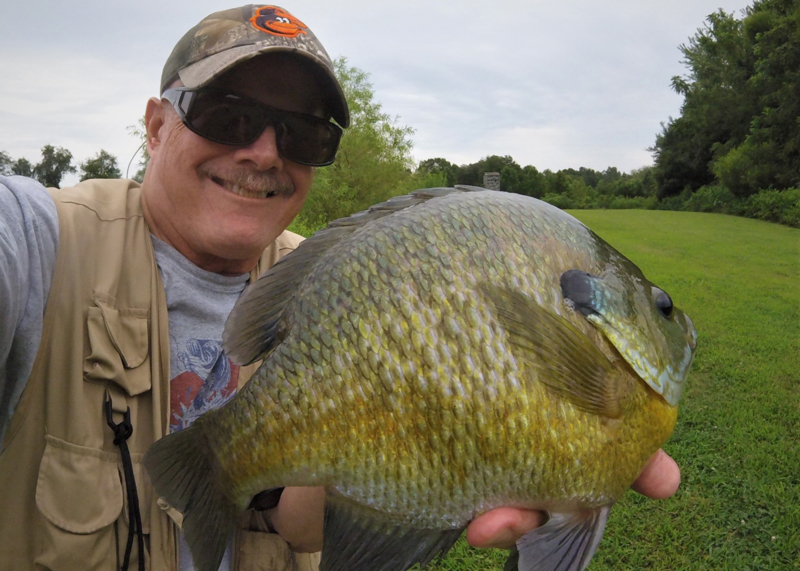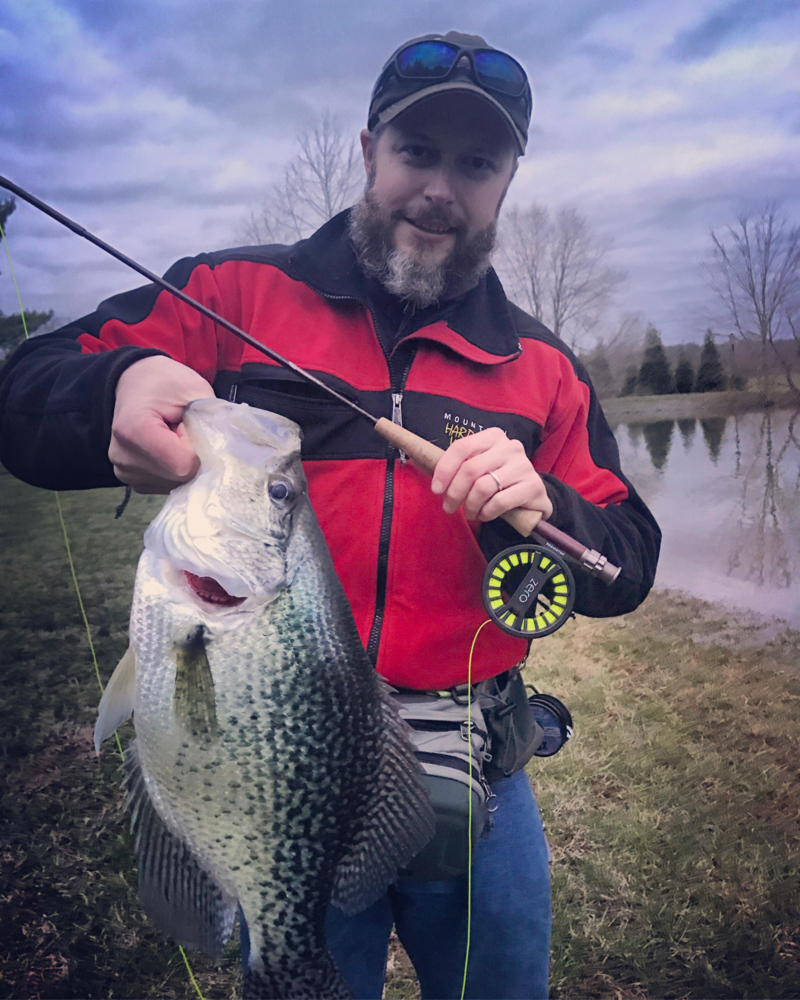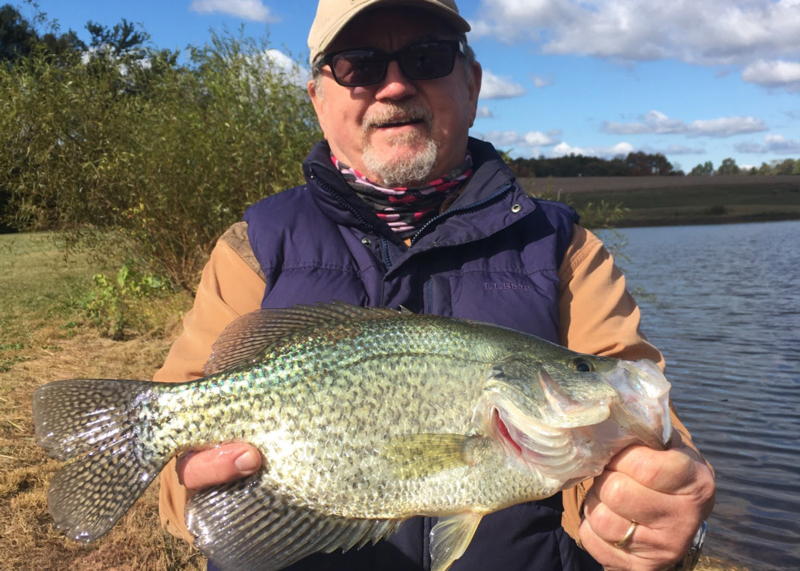Most people who know me know that I have a longstanding addiction to panfish species, especially bluegill and crappie. Throw in the possibility of catching trophy-class fish and the addiction only gets worse. At least 60 percent of my angling time, effort, and travel revolves around the pursuit of those rare giants of the panfish world. I’m not so sure there is a rehab program for my disease, nor do I necessarily want to find the cure… unless, of course, it involves the capture of these giants.

It all started way back in my early high school years when I caught my first trophy bluegill at a local pond near my home. The fish measured 10.5 inches and weighed 1.5 pounds, was round as a dinner plate, and fought as hard as any bass from the past. No, that’s not record-breaking dimensions, but it was enough of a trophy in my eyes that I knew right there and then that these types of fish didn’t show up every day. Soon after that life-changing event, I caught my first 14-inch crappie. Thick and heavy, I knew that these were worthy game, exceptional fish that I needed more of in my life.
Obsession followed.
Size Matters
An angler’s idea of a “trophy” panfish can vary quite a bit. Most considered nine-inch bluegills as “one-pounders,” which they are not. Fine fish, but it takes a rotund 10-inch-plus bluegill to crack the pound-sized barrier. Ultimately, I was searching for a 12-inch bluegill, or even a hybrid sunfish, that could possibly crack the two-pound mark. Fish of these dimensions are very rare in all but the most special of waters nationwide.
Likewise, with trophy crappies. Many states have citation/award minimums at the 15-inch or two-pound benchmark for an angler recognition patch or parchment. But a bona fide 17-inch specimen could possibly weigh in at three pounds. On a national level, fish of that size would be legit trophies even in the famed crappie-rich waters of Santee Cooper, Kerr Reservoir, Pymatuning, or the world-class lakes of Grenada and Enid in Mississippi. My research on these fish shows that giant crappies, even fish of 20 inches, could possibly show up in many states of the Mid-Atlantic seaboard as well.

Setting Goals
Just like any other style or species-specific type of angling, certain waters are going to be limited to the top-end size structure and no matter how hard you try the giants just may not be there. As the obsession grows, so do the goals.
It wasn’t until 2019 that I caught my very first legitimate 12-inch “pure strain” bluegill from Maryland waters. After catching many 11- to nearly 12-inch fish from this local gem I finally got “the one” and the giant, rotund female was the winning entry in the In Fisherman Awards Program that year for the catch and release division. I was ecstatic!
Meanwhile, over on the crappie side of the world, the quest for the 17-incher is a continuing story. I’ve come very close with a 16.5-incher and a good friend of mine scored a 16.75-incher from the same water. Both fish were caught during last year’s pandemic lockdowns. Another friend captured a stunning 20-inch crappie while testing out his new fly rod at a club pond and the knowledge that that fish still exists has me losing a little sleep some nights.
With so many public waters producing big fish it makes sense to diversify a bit and hit the slab-rich tidal Potomac or Pennsylvania’s Pinchot Lake where not one, but two four-pounders have been caught since year 2000. The Potomac looms large, having rewarded me with a beautiful 2.5-pounder in 2018.

They are out there. You just have to get a jig in front of one of them. Numerous tidal flows on the Eastern Shore are also calling. Until then, the obsession continues.
Tips for Targeting Giant Panfish
Although you may be trophy hunting, remember that elephants eat peanuts. The monster 12-inch ‘gill pictured here took a 1/64th ounce hair jig on four-pound line.
A high percentage of trophy bluegills come from small private venues or “under the radar” public lakes that the masses will overlook. Exceptional crappies, conversely, are often accessible from many larger public lakes. It’s safe to say that 75 percent of the 14-inch plus crappies I have caught in a lifetime of angling have come from public venues, not private — although an absolute giant can pop up just about anywhere.
Remember that fish populations are often cyclic in size-structure over a period of several years; an area with small fish may well produce trophies a few years down the road, and one that produces huge fish this season won’t necessarily do the same next season.
Record Trophy Panfish
You say you want to go after a record-breaking catch? These trophy panfish currently top the charts.
Bluegill
DE – 2 pounds, 10 ounces
MD – 3 pounds, 4 ounces
PA – 2 pounds, 9 ounces
VA – 4 pounds, 8 ounces
World – 4 pounds, 12 ounces
Crappie
DE – 4 pounds, 9 ounces
MD – 4 pounds, 4 ounces
PA – 4 pounds, 3 ounces
VA – 4 pounds, 14 ounces
World – 5 pounds, 3 ounces
-By Jim Gronaw